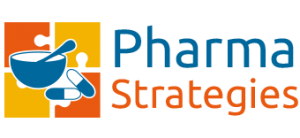- Q3 net sales from continuing operations1were in line with prior year (cc2, +1% USD):
- Growth drivers included Entresto USD 632 million (+45% cc), Zolgensma USD 291 million (+79% cc), Cosentyx USD 1 012 million (+7% cc), Kisqali USD 183 million (+50% cc) and Promacta/Revolade USD 442 million (+16% cc)
- Sandoz …
- C3 glomerulopathy (C3G) is a rare renal disease, affecting young patients with a poor prognosis and significant unmet need.1–3
- Iptacopan (LNP023) is a potential first-in-class, oral, potent and selective factor B inhibitor of the complement system’s alternative pathway, targeting the underlying cause of C3G.4–6
- Data presented at the American Society of Nephrology (ASN) 2020 Annual Meeting shows that investigational iptacopan …
- Orphan drug designation is reserved for medicines treating rare, life-threatening or chronically debilitating diseases
- IgA nephropathy (IgAN), while rare, is the most common form of glomerulonephritis, affecting mostly young adults with no approved treatment option and significant risk to progress to e …
- Huntington’s disease is a rare, inherited neurodegenerative disease that leads to progressive disability and death
- There are no approved disease modifying therapies that delay disease onset or slow progression of the disease
- Branaplam (LMI070) is an orally administered, small molecule RNA splicing modulator that could potentially reduce the levels of mutant huntingtin protein
Basel, October …
- Dominic De Souza, global head of Anti-Infectives sustainability and AMR program, appointed to represent Sandoz on AMR Industry Alliance
- Alliance brings together approximately 100 life science companies / associations in search of sustainable solutions to curb antimicrobial resistance (AMR)
- Sandoz, as largest global provider of generic antibiotics, is committed to driving a pragmatic and balanced approach to tackling this growing global health threat
Holzkirchen, October 20, 2020 — Sandoz is pleased to announce the …
- If approved, inclisiran will be the first and only small interfering RNA (siRNA) in Europe for patients with hypercholesterolemia or mixed dyslipidemia1
- Cardiovascular disease (CVD) claims 3.9 million lives annually in Europe2, and 80% of high-risk patients do not reach guideline-recommended low-density lipoprotein cholesterol (LDL-C) targets despite the widespread …
In continued support of the people of Beirut, Lebanon impacted by the August 4 port explosion and the ongoing rebuilding efforts, Sandoz has donated 20 critically needed generic medicines through the non-governmental organization (NGO), Beit el Baraka.
The donations will be disbursed to severely damaged hospitals and also dispensaries in order to best respond to the ongoing devastation, and supports the initial monetary donation from Novartis to the Red Cross for early relief efforts.
Sandoz is thankful for the safety of our associates who live and work in Lebanon, and grateful …
- The European Medicines Agency has granted iptacopan a priority medicines (PRIME) designation in C3 glomerulopathy (C3G).
- PRIME is granted for medicines that may offer major therapeutic advance or benefit patients without treatment options.
- C3 glomerulopathy (C3G) is a rare renal disease, affecting young patients with a poor prognosis and significant unmet need.1 …
2.2 billion people are blind or visually impaired worldwide. Half of them lack access to eye care. Together, we are working to change that. This World Sight Day, Novartis is proud to partner with the International Agency for the Prevention of Blindness (IAPB) to expand equitable access to eye care in remote communities with the initiation of early detection eye health screening programs.
In Rwanda, it is estimated that more than 65,000 people (0.6% of the population) are blind in both eyes and that 12% of the population have a correctable refractive error or blurred vision, requiring corrective lenses.1
In this country of more than 12 million residents, there are only 18 ophthalmologists.
As one of those ophthalmologists, and the only one within a catchment area of 1.2 million people from Rwanda and nearby countries, Dr. Theophile Tuyisabe has an enormous responsibility. Each day he commutes an hour to the Eye Unit at the Kabgayi Hospital, treats …
Follow us on Facebook
ADDRESS – ZIMBABWE
Suite 204, Block 1
Long Cheng Plaza
Mutley Bend, Belvedere
Harare, Zimbabwe
ADDRESS – ZAMBIA
Plot 43504
Apex Chalala
Off Kasama Road
Lusaka Zambia
